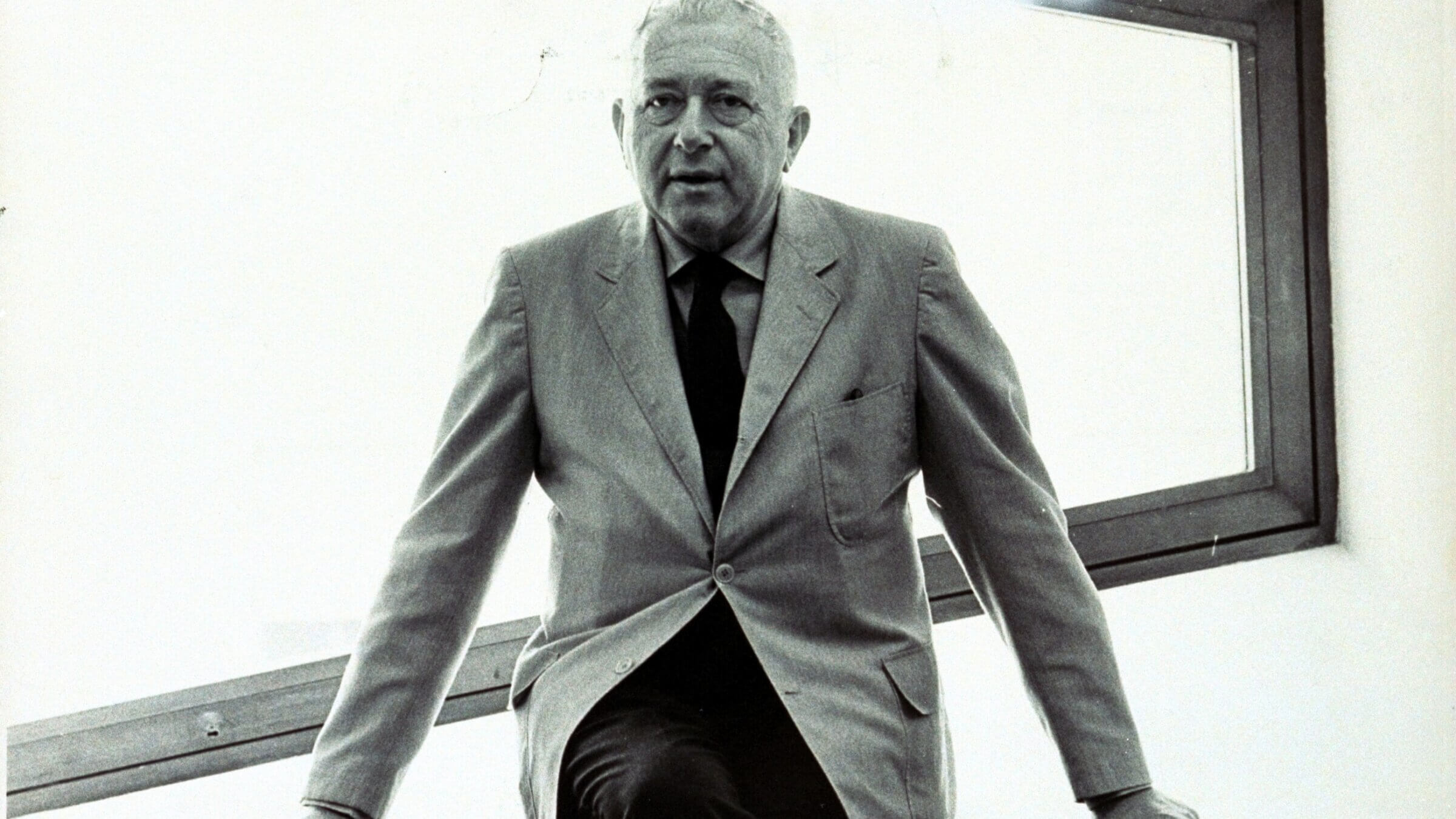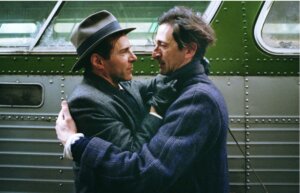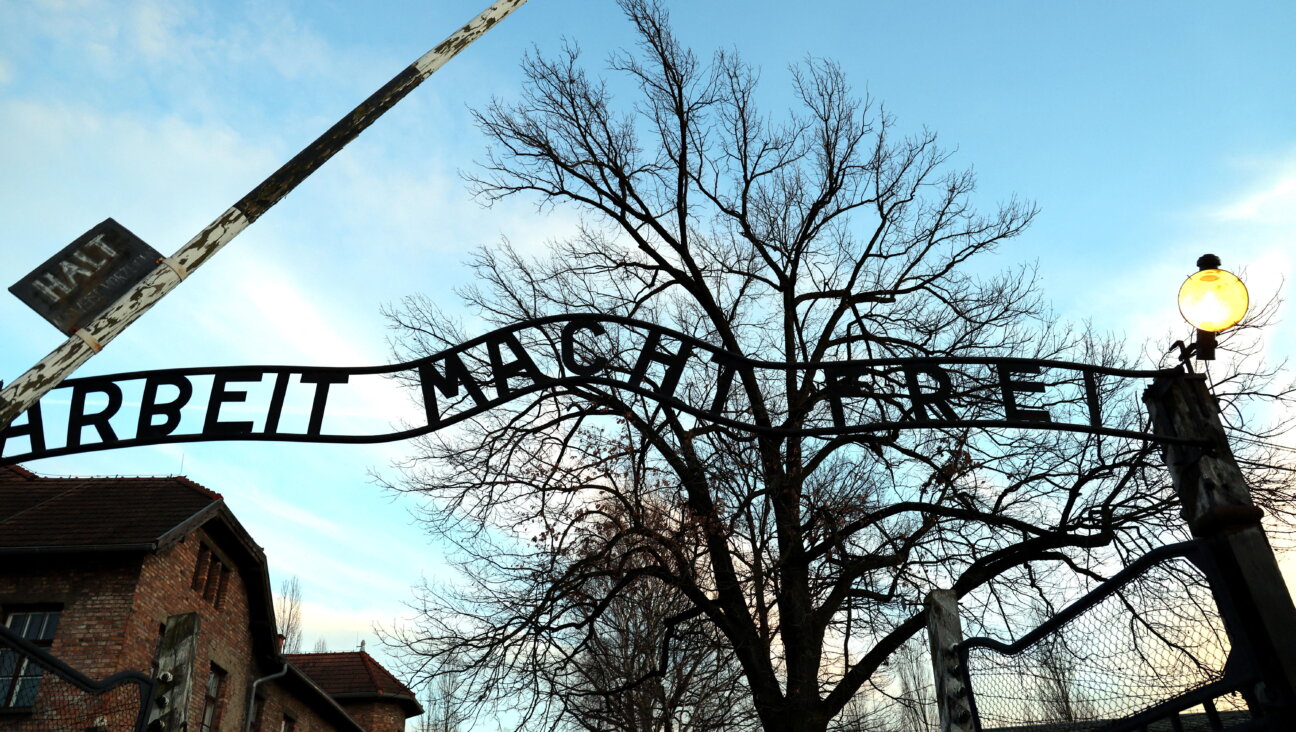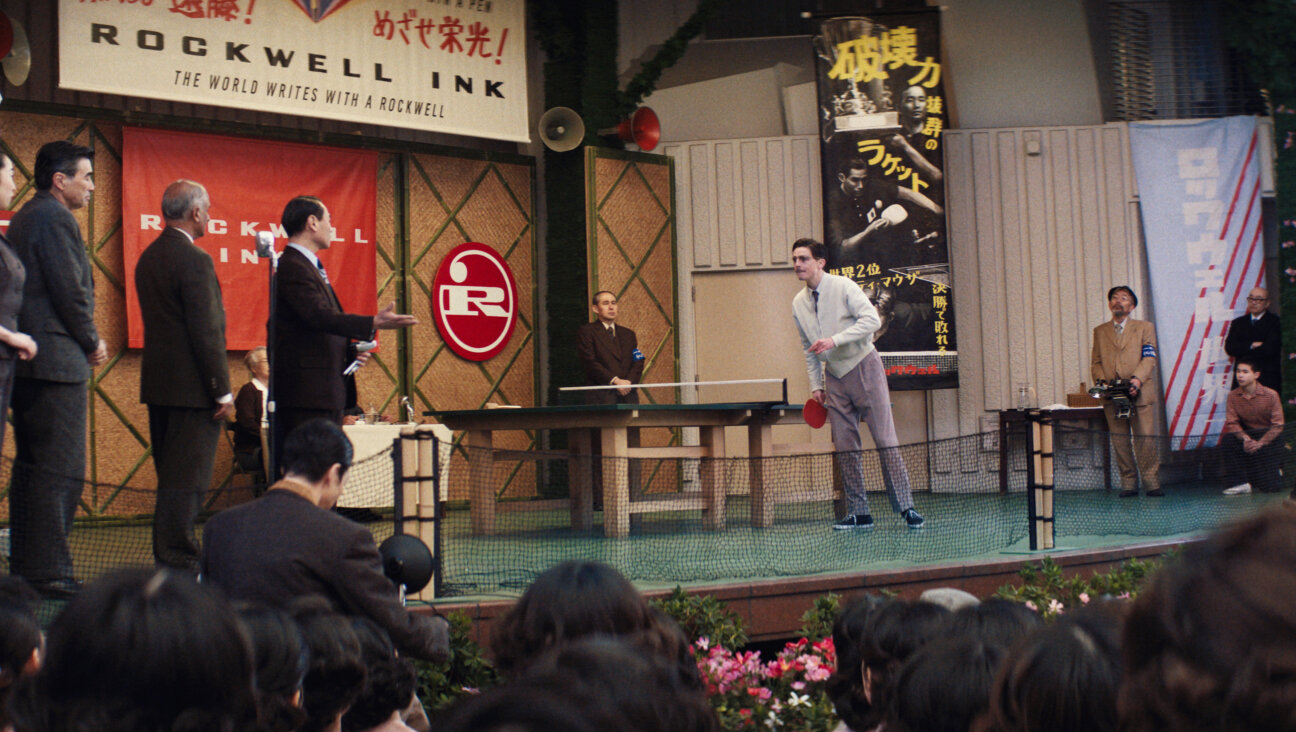In the brutality of ‘The Brutalist,’ a misunderstanding of the Jewish architect’s experience
László Tóth’s story runs counter to the real-life experience of Marcel Breuer, Ernő Goldfinger and others

Architect Marcel Breuer, circa 1966. Photo by Getty Images
In Brady Corbet’s The Brutalist, Adrien Brody plays László Tóth, a Hungarian Jewish survivor of Buchenwald concentration camp, with his customary emotional intensity. Brody’s portrayal exudes a certain hysteria that belies the ultra-refined Marcel Breuer, a Hungarian Jewish architect whose story, along with some furniture designs, are echoed in the film, Corbet has acknowledged.
Commissioned to design Saint John’s Abbey (1961), a Catholic institution in Minnesota, Breuer was the epitome of refined diplomacy, as recounted in a study of the project. But then Breuer had arrived in America in the 1930s, and was already well established professionally at the time of the commission. Historically, no Jewish survivors of concentration camps managed to get to America in the postwar era and launch architectural careers, as László Tóth does onscreen.
More troublingly, the screenplay has Tóth hired to design a cultural center and chapel overlooking a Pennsylvania town. Oddly, the designer is later said to have been inspired by the concentration camp where he was imprisoned, reclaiming Nazi design as a form of redemption. This metaphor clearly strives for thematic power but teeters on the brink of bathos, since what architect and Holocaust survivor would ever think this way?
This unconvincing esthetic choice is matched by a melodramatic episode in which (spoiler alert!) Tóth is raped by his male employer, a bizarre development which reflects what the cultural historian Sander Gilman elsewhere defined as antisemitic “feminization” of Jewish males. Not long after the attack, Tóth agrees to move to Jerusalem with his wife. This plot development recalls the 1960 film Exodus in which the character Dov Landau (played by Sal Mineo) is questioned by the Irgun and admits that the Nazis “used” him “like a woman.”
These sometimes implausible events further remove from reality the alleged sources for the narrative, which also include the Hungarian Jewish architect Ernő Goldfinger, who prospered in London as a specialist in so-called brutalism. In the process, Goldfinger provoked the ire of author Ian Fleming, a vocal antisemite, who conferred the designer’s name upon one of the adversaries of British Secret Service agent James Bond.

Part of the problem may be the much-misunderstood term brutalism itself, which suffers from translation from the French. Originally coined by the notoriously antisemitic Swiss architect Le Corbusier, who nevertheless inspired many Jewish designers, the term “raw concrete” (béton brut) refers to a preferred building material. The basic rawness of this esthetic is not necessarily pejorative in France, where brut champagne is a dry sparkling wine.
By contrast, in English, “brutal” is indubitably harsh in implication, as when critics of the Austrian Jewish psychologist Bruno Bettelheim called him “Brutalheim” to criticize his method of treating autistic children. Yet the supposed “brutalism” created by postwar Jewish architects often exuded refinement and humanism.
To cite only one example among many, the Monument to the Negev Brigade designed by Dani Karavan in the 1960s in memory of the members of the Palmach Negev Brigade killed during the 1948 Arab Israeli War. It is located on a hill overlooking the city of Be’er-Sheva, where its concrete suits the desert landscape, accentuating the impression of a lunar setting. Karavan’s website specifies that the materials used in the monument include “wind, sunlight, water, fire, desert Acacias, and grey concrete.”
By contrast, nothing in The Brutalist achieves this level of architectural expressivity, although some images in the film are redolent of later concrete works by the Japanese master Tadao Ando, an incongruous addition at best.
Nevertheless, it is not true that the architectural profession as a whole “hates” Corbet’s epic, as The Guardian misleadingly claimed recently. In these pages, Daniel Liebeskind, whose projects include the Jewish Museum in Berlin and the Contemporary Jewish Museum in San Francisco stated that the film “resonated” with him, adding that in his view, Tóth was a “mensch who has prevailed without selling his soul.”
Similarly, the UK film critic Peter Bradshaw even lauded The Brutalist for drawing upon the literary works of Bernard Malamud and Saul Bellow in its “depiction of the U.S. immigrant adventure and the promise of success.” Yet, would the fastidious perfectionists Malamud and Bellow wish to be associated with this filmic example of over-egging the pudding, or in Yiddish, zu-farshmessen mit eyla (to overdo it with eggs)?
No sooner has the audience absorbed one misfortune suffered by Tóth than others occur to this true schlimazel of the construction industry who struggles with heroin addiction.
Other purported sources for designs shown in the film were drawn from work by the American Jewish architect Louis Kahn, a humanist who would never have claimed inspiration from concentration camps. Adherents of brutalism admired and emulated the creations of Louis Kahn, who cannot himself be comfortably classified with them.
Perhaps for this wayward or somewhat cavalier approach to an art form, the creative team of The Brutalist has been targeted with special vehemence by the American Jewish architecture critic Mark Lamster and colleagues in a podcast titled Why the Brutalist Is a Terrible Movie.
Biographer of the Nazi sympathizing U.S. architect Philip Johnson, Lamster summed up The Brutalist as “everybody wants an Oscar.” Somewhat more temperately, the English designer Edwin Heathcote has argued that The Brutalist repeats the “colossal cliché” that architects are “lone, tortured geniuses” when, in reality, architecture is essentially a collaborative activity. And insofar as its purpose is to be used by people, the absence of any depiction of how visitors or dwellers interact with Tóth’s designs suggests a major misunderstanding about the main point of the endeavor.
That said, some aspects of the film should please any Jewish filmgoer. The theme of the self-willed silence of a generation of Holocaust survivors is credibly referred to. And with a low budget, and a shooting schedule of just over one month, to produce a 215-minute film that has drawn much praise, is surely noteworthy.
It might be too much to expect that any such film could capture the motives and achievements of exemplary Jewish architects captivated by brutalism. One further example, Israel’s Moshe Safdie, sought to establish a more equitable society by using relatively inexpensive concrete. This, naturally enough, was done by looking forward, and not obsessing about concentration camp designs by Nazi architects.

















